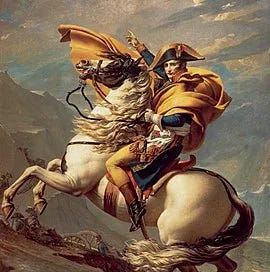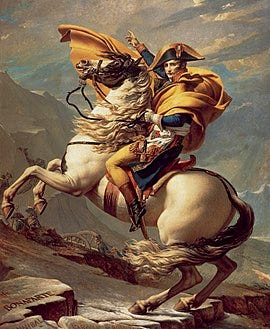In lieu of the usual post for November and December, I’m here to give you two book recommendations and some thoughts about them.
Chip War
As my Twitter thread says, it really is an amazing book. Here’s a slightly more detailed summary: in the 50s, the Department of Defense in the US (and later NASA) was the primary buyer of the cutting edge of semiconductors. Then firms scaled and and started selling to the consumer market. As labor costs in the US increased and companies sought to outsource, they started producing more in East Asia.
Governments in East Asia wanted a share of this both for economic reasons but also in the case of Taiwan where they believed that if Taiwan made semiconductors that were important to the US, they’d be protected in case of a Chinese invasion.
And as time went on two trends were solidified: increasing specialization in the semiconductor industry and outsourcing of fabrication to East Asia. Both of these had very good reasons. Specialization is inevitable for highly complex production methods. It is hard for a company to be the best at all possible aspects of it, and it makes more sense for them to buy certain services or goods than buy it in house.
Now add to that East Asian governments like Taiwan, Japan and South Korea offering large subsidies for their companies to enter the semiconductor market. They wanted to move up the value chain in manufacturing, and so with the added benefit of state subsidies, companies in these markets were able to scale up. One very important case study is TSMC in Taiwan.
TSMC
TSMC is a pure play semiconductor foundry. It does not design chips but fabricates them. Companies that design chips like Apple or Qualcomm send orders to TSMC, and it makes them. The process of making such chips is very complex and requires a level of knowledge that is extremely hard to accumulate over time. As Jordan Schneider and I wrote in our post on the EA forum
TSMC makes over half of the world’s semiconductors. It gets two-thirds of contracts for semiconductor manufacturing and is one of the two companies that make 5nm transistors (the term somewhat funnily has no relation to the distance of 5nm) and will be for some time, the only company that can make 3nm chips
TSMC is a good example of the chip industry’s growing specialization. Previously companies used to design and make their chips themselves, but as they got more complex and the market got larger it made more sense to ditch the making and design it themselves. Making chips requires billions of dollars of capital investment, which needs to be repeated every few years as semiconductor technologies improve and new fabrication plants need to be built. It’s more efficient to have a company that specializes in this. That company is TSMC. Because of its large scale it can make those massive capital investments and manufacture chips more efficiently than integrated firms can.
The second part relating to TSMC is that Taiwan’s government chose to build a semiconductor industry in the 70s as a way of making it worth for America to protect it. The argument goes that if Taiwan had manufacturing facilities that were important for the American economy and national security, America would come to Taiwan’s aid if China attacked it. It even gave this a name: the Silicon Shield. So, they encouraged a small fabrication industry and then got Morris Chang to scale it up through TSMC. In the case of Chinese invasion, TSMC’s chip production would at least momentarily stop. In the worst case, it would permanently stop and it would take years for other countries to replace the fabrication facilities. The fate of TSMC, and by extension the global economy’s, is intimately connected with the trilateral relationship between the US, China and Taiwan.
Talent and Fragility
Another thing that the book emphasized was how crucial human capital is to this industry. For example, engineers in ASML (the company that supplies chip making equipment to TSMC) depends on the accumulated knowledge of its engineers over many years to make new and better EUV lithography systems. ASML engineers have to go to TSMC plants to help them set up and run the systems. They learn a lot when this happens and even if ASML’s technology gets copied by another company, they will not be able to replicate years of experience. This means that there is a serious war for talent in the industry for specific roles that require experience. This probably limits the number of companies that can be founded, and forces the industry to be more concentrated than it would be otherwise. (In related news, the US has banned its citizens from working with Chinese companies on critical semiconductor technologies)
Finally, there is another implicit message in the book: the foundation of the world’s most crucial industry is very fragile. There are only two companies that make advanced 5nm semiconductor equipment (TSMC and Samsung), and only one company is the seller of advanced lithography equipment (ASML). Small perturbations in these companies could have massive ripple effects on all other industries.
The Napoleonic Wars: A Global History
The second book here is also about history, but for a time period around 200 years before the first one.
The story of the Napoleonic Wars is probably more complicated than I can do justice to in the coming paragraph. But here it goes: After the Revolution, tensions between France and its neighboring states grew for a variety of reasons. This collapsed into war with Austria, Great Britain, the Holy Roman Empire, Spain (for a while), and others. During this war, a young guy called Napoleon did really well and rose up the ranks. France won, but the peace was fragile. War broke out again and just a year into it Napoleon staged a coup and declared himself First Consul. Again for reasons that are too complicated to explain in this paragraph, France won again. And again. And then again. And again. And then they lost in the end.
Napoleon Crossing the Alps by Jacques-Louis David
The above paragraph is a severe oversimplification and you should go read the book to learn about it in more detail. But some ideas stuck with me till the end.
Some Miscellaneous Thoughts
The first was the hard nosed realism that is required to maintain peace among Great Powers. Across history, the only thing that has reliably maintained peace has not been ethnic ties, commitments of peace (just ask Hitler that), or anything else. In the end what lead to the long peace after the Congress of Vienna was the system of alliances and agreements that prevented a single power from gaining too much power in Europe.
The second was the extreme value generated by Napoleonic reforms. I’m going to caveat this by saying that in general dictatorships like that of Napoleon are generally bad. Even after that it seems as if Napoleonic reforms had a positive effect on the areas they occupied, and it may even explain the Italian development divergence. See this paper by Acemoglu, Johnson and Robinson and this paper by Postigliola and Rota for more. Given this difference, the value of a centralized state with a judiciary, central bank, formal education etc. and uprooting previous extractive institutions is much higher than I previously thought!
The Great Man Theory of History
A common question that history amateurs such as myself will ask is: to what extent is history determined by the actions of extraordinary people versus structural forces that are immovable? The former is known as the Great Man Theory of History, and because I haven’t heard of a name for the latter, I’ll call it the structural hypothesis.
At first glance, Chip War seems to be a book supporting the structural hypothesis, and The Napoleonic Wars supporting the Great Man theory. But each story has quite a bit of nuance that needs to be appreciated. While it may look as if the invention of semiconductors was a structural force, it was because of key personalities. It was because of William Shockley that it happened when it did. Then it was because of Shockley (or rather because of his mismanagement) that people left Shockley’s lab to start Fairchild semiconductor. It might look like a structural force that Taiwan has an active semiconductor industry, but it was the individual initiative of Morris Chang that led it to go to this extent.
On the other hand, The Napoleonic Wars ostensibly is a book about how one man shaped Europe. This is true, but even he had to face structural factors that he couldn’t change. Napoleon was a military genius but he couldn’t change the fact that Russia was too far to successfully retreat in the War of the Sixth Coalition. He certainly couldn’t change the fact that because French interests were permanently opposed to Britain’s, he’d have a permanent enemy off his coast. Britain was a naval superpower which France wasn’t, again for structural reasons, and Napoleon couldn't do anything about it.
In the end how do we reconcile these two views? My answer is that structural factors like geography, the reality of great power politics and historical path dependence give the constraints of where the future can head. But between these constraints, individual people have plenty of agency to change things, and that is where they matter.





This statement is false: "only one company is the seller of advanced semiconductor manufacturing equipment (ASML)."
Lithography is only one of about 25 rmajor steps in the fabrication and testing of a completed wafer. Each step requires specialist advanced equipment supplied by companies other than ASML.